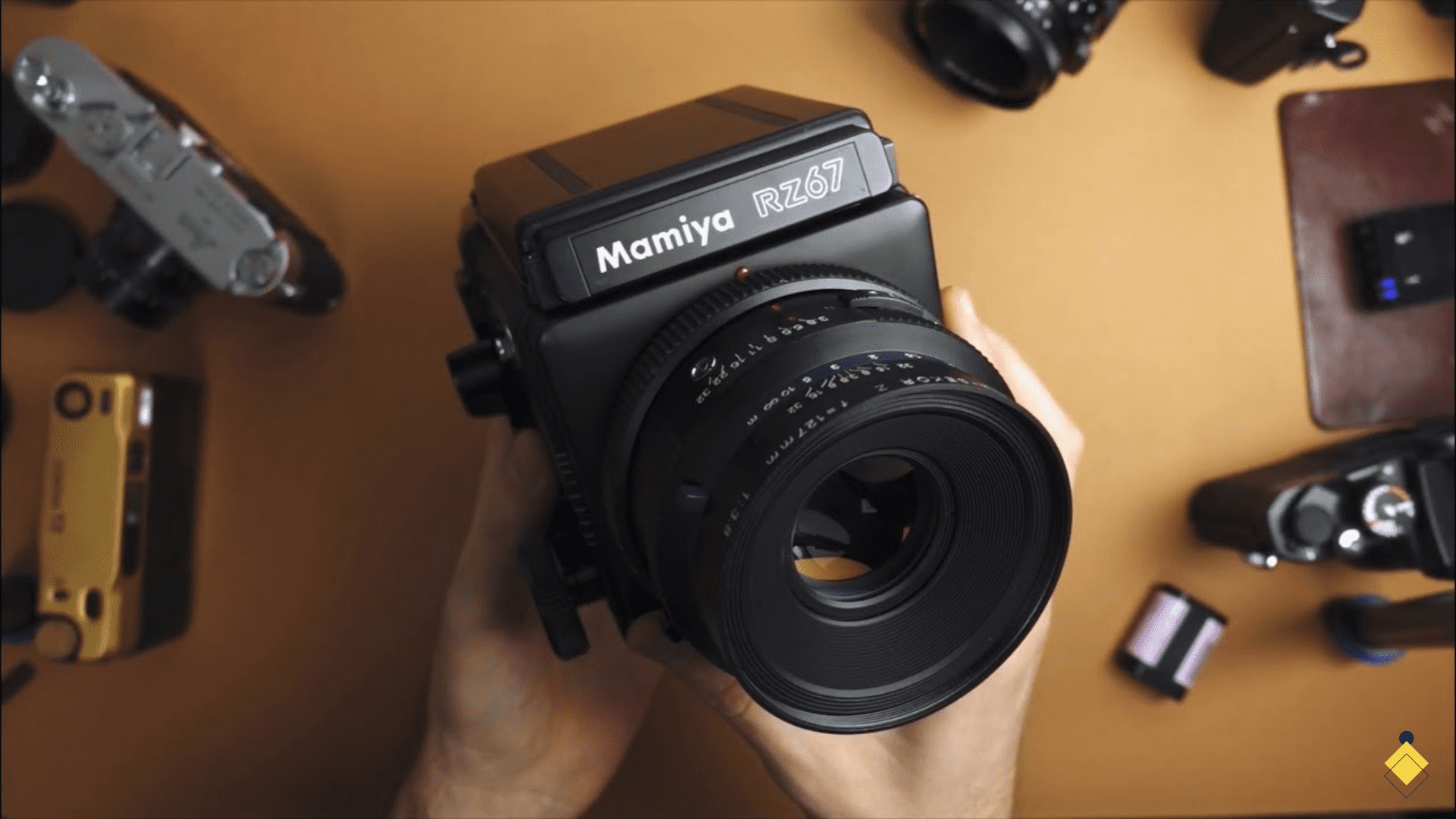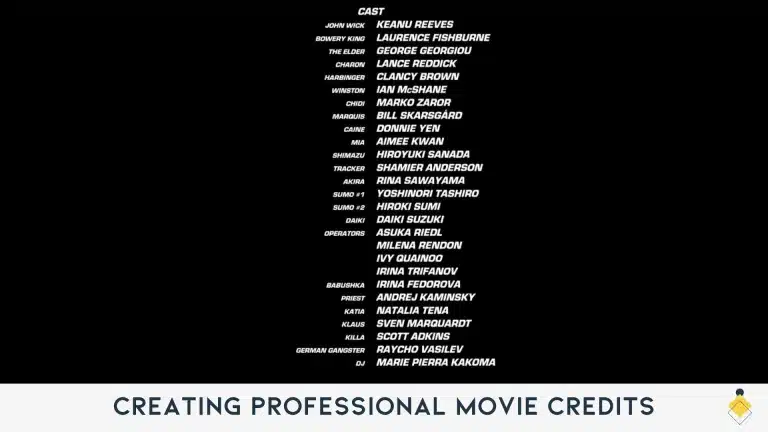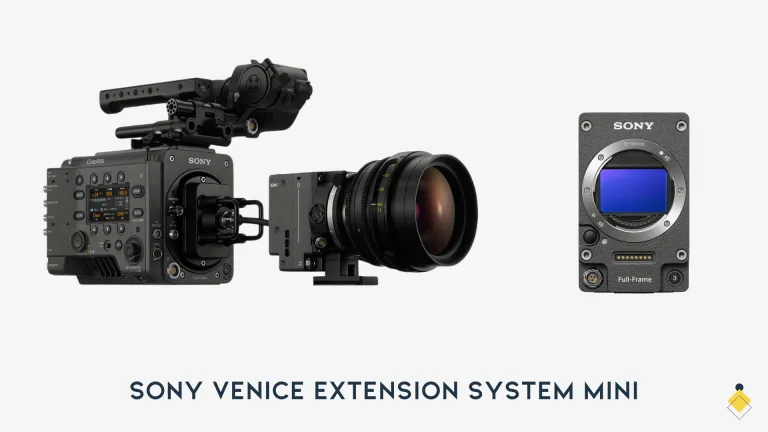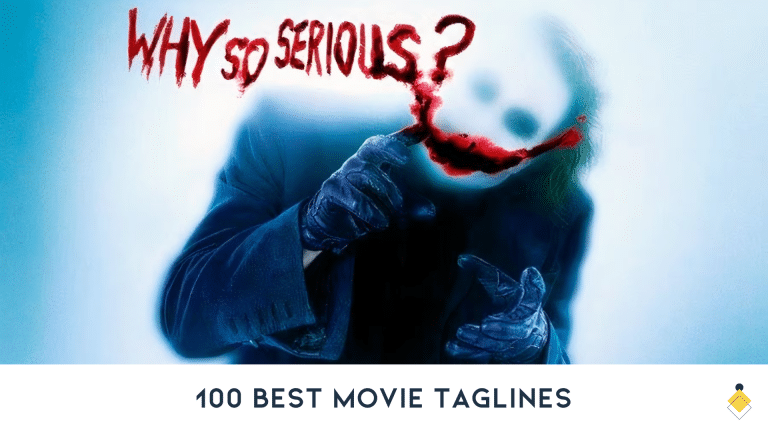The Mamiya RZ67 is one of the most legendary medium format film cameras ever made. First introduced in 1982, the RZ67 changed the game by bringing many of the features and flexibility of large format view cameras to a more portable and affordable 6x7cm film SLR system.
In this in-depth review, we will look at what makes the Mamiya RZ67 such an iconic camera, its standout features, image quality, ergonomics, and how it compares to other medium format systems. After using the RZ67 extensively for over a year for both studio and location photography, we’ll provide our thoughts on this camera’s strengths and weaknesses.
Overview of the Mamiya RZ67
The Mamiya RZ67 is a modular medium format SLR system that was manufactured by Mamiya in Japan from 1982-1995. It uses the 6x7cm film size, providing over 2.5 times the surface area of 35mm film for improved resolution, clarity, and tonality.

Some key features that made the RZ67 stand out include:
- Interchangeable lenses with central leaf shutters
- Interchangeable film backs including 120/220 roll film and Polariod backs
- Removable rotating film back to shoot vertical or horizontal orientations
- Large and bright interchangeable viewfinders including prism, waist-level, and AE finder options
- Solid, modular build quality with extensive customization options
The original Mamiya RZ67 provided the core features listed above. This was followed by the RZ67 Pro II in 1995, which added features like autofocus capability, auto exposure, and TTL flash. The RZ67 Pro IID was the final iteration, offering minor upgrades to the Pro II model before being discontinued.
While Mamiya offered smaller and lighter 645 and 6×6 medium format systems, the RZ67 stood out as their no-compromises professional camera aimed at studio, portrait, landscape, and architectural photographers needing high image quality from a reliable mechanical camera. Its modular system meant photographers could customize it for their specific needs.
Mamiya RZ67 Image Quality
The Mamiya RZ67 is capable of spectacular image quality that still holds up very well today. The large 6x7cm film size provides incredible resolution, tonality, and ability to enlarge prints.
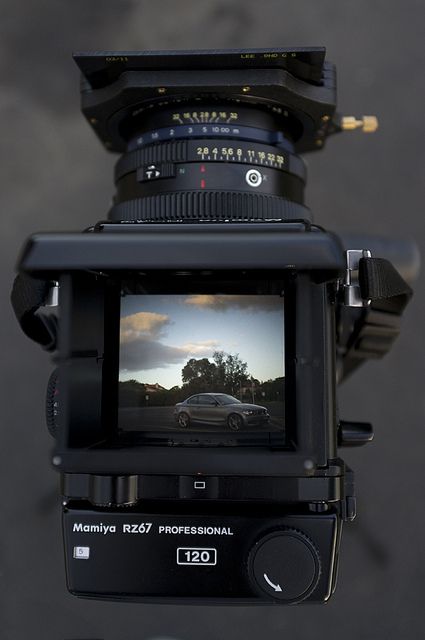
The combination of superb Mamiya RZ lenses, sharp waist-level viewfinders, and sturdy build quality allowed photographers to consistently achieve excellent results with the RZ67. The 6x7cm size strikes a great balance, being quite a bit larger than 645 format but without the bulk and equipment needs of large format 4×5” film.
Even though film is the limiting factor, the RZ67 lens quality and bellows design allow tons of detail to be captured on film. Results are comparable to far more expensive large format view cameras. The native 6×7 aspect ratio is also great for printing without cropping.
Having shot extensively with the Mamiya RZ67 and tested all its prime lens options, we feel the 110mm, 127mm, and 180mm lenses provide the best mix of sharpness, contrast, tonality, and low distortion. The quality from those lenses rivals far more expensive medium and large format glass. The 65mm and 50mm lenses allowed for wide scenes but had more distortion and softness issues around the edges.
Overall the potential for image quality is incredible, but does require care in focusing, using sturdy tripods, and selecting the right RZ67 lens for the job. Even today, a Mamiya RZ67 in the hands of a skilled photographer using great film can easily out-resolve high resolution full-frame digital cameras.
Handling and Ergonomics
The Mamiya RZ67 is a large, heavy, fully mechanical camera. The body itself weighs nearly 3 lbs, while the 110mm lens adds another 1.2 lbs. Add a prism viewfinder and 120 film back, and you are looking at nearly 5.5 lbs total before even putting it on a tripod.
This hefty weight and modular design gives the RZ67 the feeling of operating a precision machine rather than just snapping a picture. Adjusting settings takes patience and practice. But this process forces you to slow down and consider every setting needed to capture the ideal image.
The RZ67 body provides a large right hand grip with shutter release and main dials for shutter speed. The left hand supports the heavy lens and focuses through a large dial on the lens barrel. A revolving back allows switching between horizontal and vertical orientations while viewing on the waist-level finder or prism finder.
One ergonomic downside is that the shutter release is on the far right of the body, requiring the right hand to move from the grip for each shot. The mirror also produces a loud “clunk” sound with each shot. And lenses need to be cocked separately before firing the shutter. These quirks slow down the shooting process compared to modern SLR or mirrorless cameras.
While heavy and bulky, the RZ67 is fairly well balanced on a tripod or mono-pod. The right hand grip allows it to even be used handheld with care, although this is challenging with longer lenses. Overall the RZ67 demands slow, methodical operation on a stable platform like a sturdy tripod for best results. This slow pace forces you to carefully consider every shot rather than spray and pray rapid-fire shooting.
Interchangeable Viewfinder System
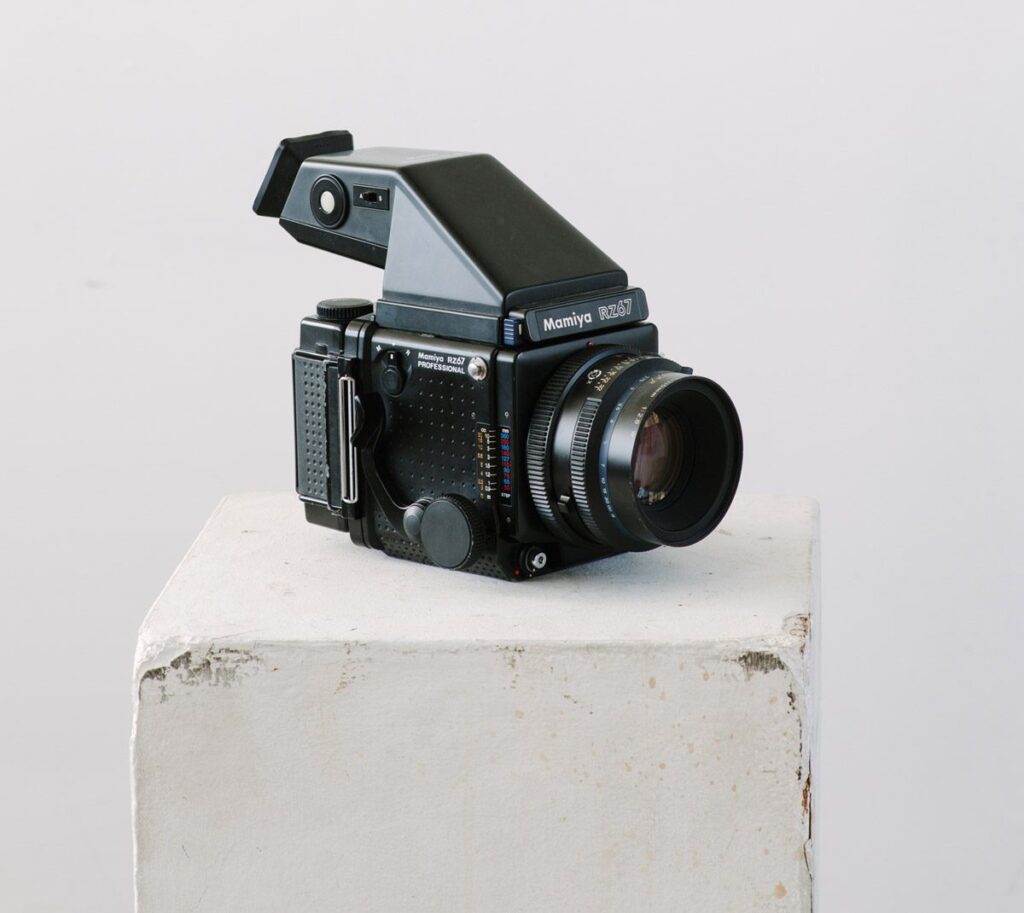
One of the most unique aspects of the Mamiya RZ67 is its interchangeable viewfinder system. This gives photographers flexibility to choose the viewfinder best suited for a particular job.
The standard viewfinder is the waist-level finder. Images on the matte screen appear upright on this large magnified viewfinder conveniently positioned at waist height. This allows easier composition at angles not easily visible through SLR prism finders. The waist-level finder can be used handheld or on a tripod.
For eye-level SLR-style shooting, Mamiya offered multiple prism finders including non-metered, metered-manual, and fully automatic AE versions. The prisms attach securely to the top of the body while providing a bright upright eye-level viewfinder. The AE prism added autofocus capability plus aperture priority and program auto-exposure modes.
Finally, the RZ67 accepts specialized viewfinders including the Pro-SD for slide duplicates or Quick Shoe for mounting digital backs. This viewfinder flexibility let photographers setup the RZ67 perfectly for any given shooting situation. The waist-level finder in particular provides a unique experience that influenced how you compose and visualize the image before capture.
Interchangeable Film Backs
Another major advantage of the Mamiya RZ67 system is the interchangeable film back design. This flexibility let photographers switch film stocks and formats quickly and easily to suit different shoots.
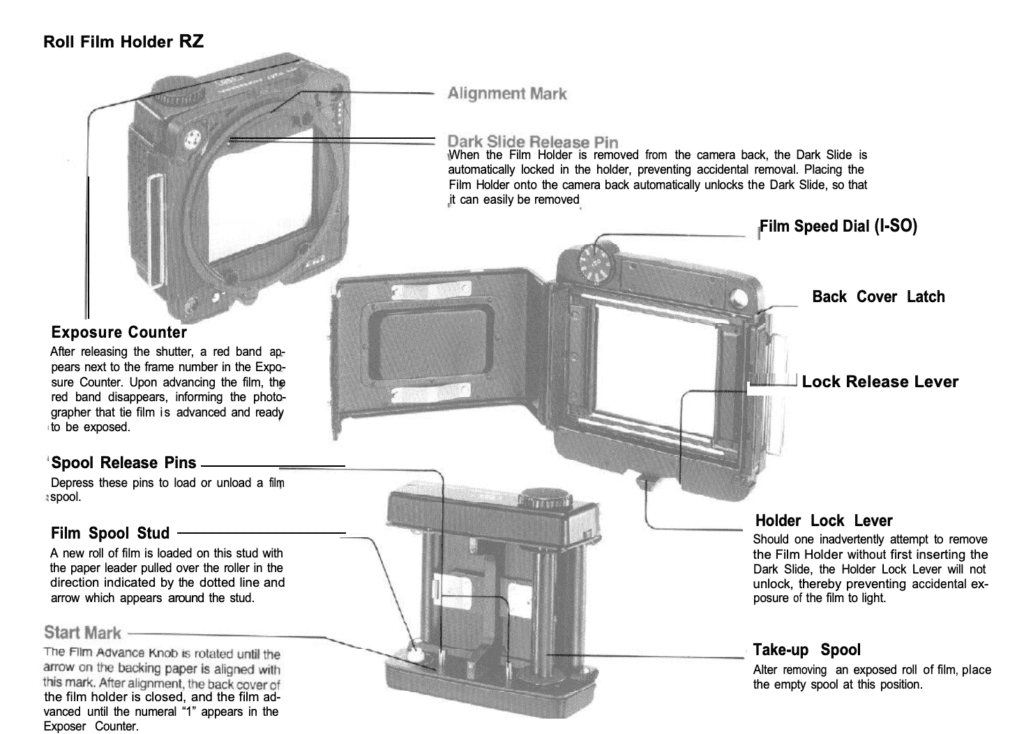
The most common film backs were:
- 120 roll film producing 10 exposures in 6x7cm format
- 220 roll film for double the capacity at 20 exposures per roll
- Polaroid 6×7 instant film back
But Mamiya also offered special purpose film backs for:
- Sheets film holders
- QuickLoad film holders
- Instant slide duplicates
- Digital camera backs
Being able to swap film backs within seconds without needing a darkroom gave photographers tremendous flexibility in the field. Specialty Polaroid and instant film backs brought additional creative options that could be interchanged as needed with primary 120 or 220 roll film. And the universal film back design meant new digital camera backs could be added once those became available.
Legendary Mamiya RZ Lenses
One of the RZ67’s standout features is the wide range of high quality lens options available in the Mamiya Sekor line, all featuring leaf shutters:
- 37mm f/4.5 Fish-Eye
- 50mm f/4.5 Wide Angle
- 65mm f/4 Wide Angle
- 75mm f/3.5 “L-Series”
- 90mm f/3.5 Wide Angle
- 110mm f/2.8 Standard Lens
- 127mm f/3.8 Telephoto
- 140mm f/4.5 L-Series Telephoto
- 180mm f/4.5 Telephoto
- 250mm f/4.5 Telephoto
- 350mm f/5.6 Telephoto
- 500mm f/8 Mirror Lens
- 2X Teleconverter
This range covers ultra wide fish-eye all the way through super telephoto. But the real standouts in the line are the 110mm, 127mm, and 180mm primes which offer the best sharpness and rendition for portraits and mid-range work. Most photographers settled on one or two lenses they used predominantly.
The leaf shutter in each lens provides flash sync all the way up to 1/400s, enabling use of flash in daylight at wide apertures for shallow depth of field. Leaf shutters also produce less camera shake compared to focal plane shutters. Focusing is manual only though later models added auto focus capability on some lenses.
A few exotic lenses like the 37mm fish-eye and 500mm mirror telephoto demonstrate the creative possibilities, though most photographers focused on the excellent 110mm f/2.8 standard lens or 127mm for portraits. In terms of image quality and flexibility, the Mamiya Sekor leaf shutter lens line stands as one of the RZ67’s biggest assets.
Review of Key Mamiya RZ67 Features
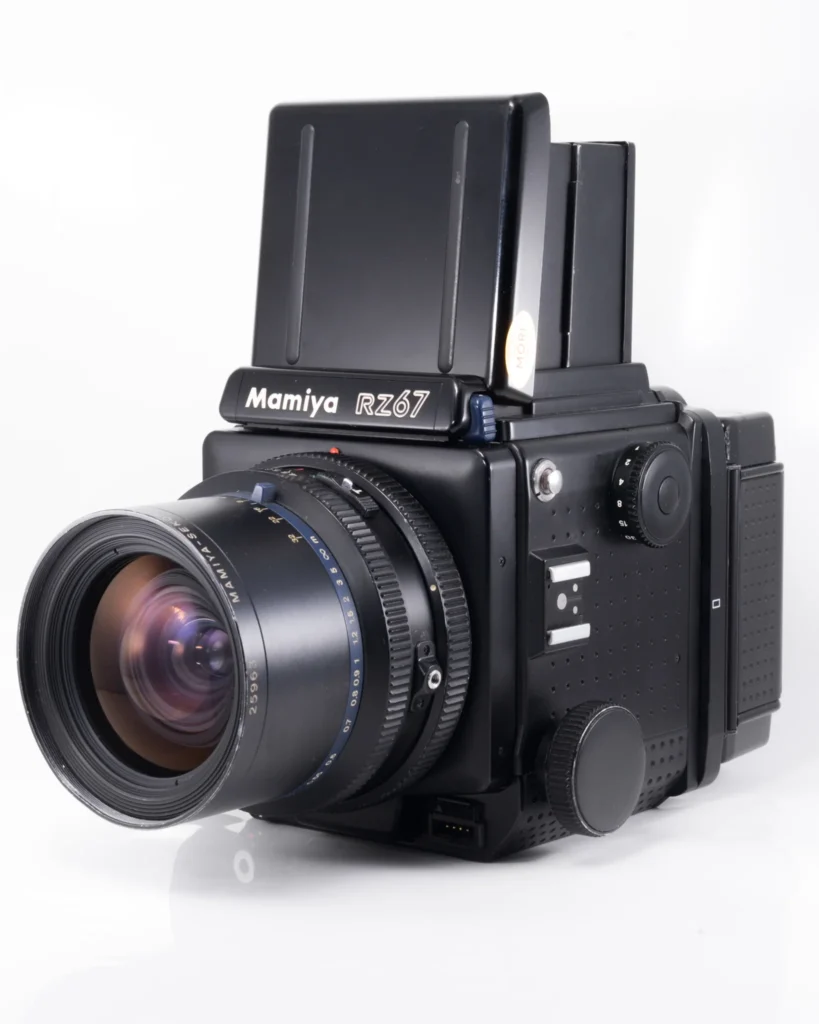
Let’s take a deeper look at some of the Mamiya RZ67’s core features and how they perform in real world use:
Rotating Back – The revolving back is a crucial design element that sets the RZ67 apart from most other medium format SLRs. Being able to quickly switch between horizontal and vertical orientations without turning the whole camera is incredibly useful. This flexibility makes shooting with the waist-level finder feasible since you can rotate to always get an upright orientation on the ground glass. The back locks securely in place in either orientation. Just remember to rotate gently and take care to not force it past the stops.
Leaf Shutters – All Mamiya RZ lenses feature in-lens leaf shutters. This provides flash sync up to 1/400s, enables high speed fill flash even in daylight, and reduces camera vibration. The leaf shutters are generally reliable and quiet. But the drawback is each lens needs to be cocked separately before firing the main shutter. Leaf shutters combined with large lens openings of f/2.8 allow fine control over depth of field.
Interchangeable Focusing Screens – In addition to the default matte screen, Mamiya offered many interchangeable focusing screen options including grid, checker, microprism, and split image. Being able to swap screens takes just seconds without any tools to choose the best option for a given situation. The microprism collar in particular is great for achieving super sharp focus with the critical lenses like the 110mm f/2.8.
Manual Film Transport – Loading film requires manually cocking the film advance lever and then removing the dark slide protecting each new frame. For critical work, this slower process results in smoother film transport. But it prevents mid-roll changes or removing a single shot on the roll. Integrated motor drives automated this process on some later Pro models.
Bellows – The bellows connecting the lens to the film back are another area making the RZ67 like a large format camera. The bellows provide a light-tight seal and allow adjustments for focus like a monorail view camera. But they are also the most vulnerable mechanical part prone to light leaks or tears if not treated gently.
Dual Shutter Release – A pneumatic shutter release button is positioned at the front of the body for vertical shooting. The main shutter release stays atop the right hand grip. So you can easily trip the shutter in either orientation while keeping your hands in the same general position. The shutter release cable socket also allows using a remote release.
Modular Design – The RZ67 body itself doesn’t actually do much on its own without adding on components like film backs, lenses, viewfinders, grips, and power drives. But this modularity means customizing the camera by adding just the components needed for a particular shoot or photographer’s preferences.
Large Body Size – With its integrated vertical grip and ample real estate for controls and dials, the RZ67 provides a very solid feeling in the hands compared to lesser Mamiya 645 bodies. The body itself weighs 2.87 pounds. Combined with a lens and finder it approaches 6 pounds. The RZ67 feels like a tank solid enough to last for decades of daily professional use.
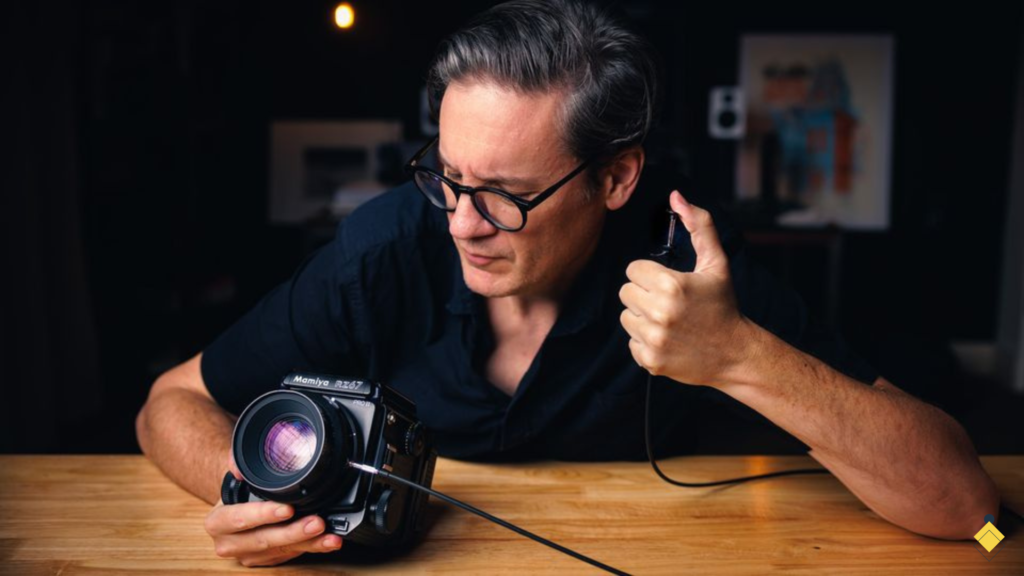
Mamiya RZ67 vs Other Medium Format Systems
The Mamiya RZ67 competed against several other medium format SLR systems:
- Hasselblad V System
- Mamiya RB67
- Pentax 67
- Bronica SQ and ETR models
- Fujifilm GX680
Compared to the Hasselblad V system, the Mamiya RZ67 has a much more affordable entry price point while offering similar quality and lens options. Hasselblad cemented its status as the premier professional medium format camera though.
Against its sister Mamiya RB67, the RZ67 provides a more portable and ergonomic package overall without sacrificing image quality. The RB is slightly more affordable but much bulkier.
The Pentax 67 is also quite compact but has fewer lens options and no interchangeable backs. The Bronica SQ and ETR systems are more affordable alternatives with great quality but lack the prestige of the Mamiya name.
Later on, the RZ67 faced competition from smaller, lighter, auto-focus 645 medium format systems. But it kept its status as the top 6x7cm camera until the end of the film era. The RZ67 stood out from competitors by combining modular flexibility with exceptional build quality and optics for a versatile high-end film camera.
Strengths of the Mamiya RZ67
After spending extensive time with the Mamiya RZ67, here are the biggest strengths we found with the camera:
- Exceptional image quality – The sharp lenses, big film negative, interchangeable backs and modular accessories make the RZ67 capable of superb image quality and tonality even by today’s standards.
- Modular flexibility – The changeable finders, film backs, lenses allow customizing the RZ67 for nearly any shooting situation. Few other cameras then or now provide this level of modularity.
- Leaf shutter lenses – Incredibly versatile leaf shutter lenses allow using flash at any speed while providing excellent performance across the board.
- Large 6×7 format – The 6×7 frame is a perfect balance between 645 and large format 4×5″ film, providing an immersive image area with high resolution enlargement ability.
- Ergonomic design – The molded grip and thoughtful layout make the RZ67 very comfortable in hand despite its large size and weight. Critical controls are perfectly positioned.
- Mechanical reliability – All manual controls mean fewer things to break. Mamiya built it like a tank to withstand decades of daily professional use. Fully mechanical operation increases confidence.
Weaknesses of the Mamiya RZ67
However, shooting extensively with the RZ67 also revealed a few areas for improvement and disadvantages versus modern cameras:
- Substantial size and weight – This camera demands a monopod or sturdy tripod for best stability. Handheld shooting is possible but challenging. The weight can become burdensome on long shoots.
- Manual operation – Expect to manually set every exposure setting before firing the shutter. Slow, methodical shooting workflow. Later Pro models added some automated features.
- No instant image review – Shooting film, you don’t see your result until after processing and scanning the film. Digital cameras provide much better instant preview and shooting feedback.
- Complexity – The many lenses, backs, finders involve a learning curve. Mastering the RZ67 takes time and practice compared to basic SLR or mirrorless camera operation.
- Limited shutter speeds – Top shutter speed of 1/400s makes it harder to shoot wide open in bright light. ND filters become necessary at times to control exposure.
- Cost and maintenance – Film processing and scanning cost money. Film backs, accessories, and pro service add up over time. Lack of electronics lowers maintenance but bellows and body repair does come up.
While the RZ67 delivers amazing results in capable hands, it does require patience and practice to master. This tool demands a thoughtful approach and careful technique to achieve images matching its high potential image quality.
Conclusion: Is the Mamiya RZ67 Still Worth Shooting Today?
The Mamiya RZ67 was one of the pinnacles of medium format film camera development. Despite being discontinued for over 25 years now, a mint condition RZ67 kit can still command over $1000 on the used market. This demonstrates the reputation and allure the RZ67 still holds today.
For many photographers, shooting film with vintage cameras like the RZ67 provides a fun creative outlet and unique look compared to ubiquitous digital photography. The hands on process, beautiful lenses, and full frame negatives can be highly rewarding.
For professional commercial work, the workflow may prove too cumbersome compared to modern digital medium format cameras now available. But no digital camera provides exactly the same shooting experience and full negative size as the RZ67.
After spending a year shooting many rolls through the Mamiya RZ67, our feelings are overwhelmingly positive. Sure it may be outdated in some ways. But the RZ67 is capable of truly amazing results in the hands of a patient photographer. No other camera we’ve used combines modular flexibility and optics like the RZ67.
If you love the hands on process of film photography, desire the highest quality negatives, and appreciate vintage gear, then the Mamiya RZ67 remains incredibly compelling even in today’s digital world. A mint condition RZ67 kit with a couple lenses, waist-level finder, and some 120 film backs offers all you really need. Shooting the RZ67 becomes an addicting experience.
While appealing mainly to artistic photographers today, the RZ67 still delivers professional medium format image quality few digital cameras can match. For photographers interested in diving into film or pushing their creative boundaries, we definitely recommend finding a Mamiya RZ67 to add to your kit. Just shooting the RZ67 for a few months will improve your photographic technique and creativity in ways that pay dividends across all your photography. The physical process of working fully manually with a beautiful piece of gear like the Mamiya RZ67 provides insight into the foundations of photography. Mastering the RZ67 requires diligence and care that forced us to slow down and consider every shot. That’s a rewarding experience that translates into better photography long after you put down the RZ67.
While not quite as ubiquitous as it was during its heyday in the film era, the Mamiya RZ67 remains an iconic camera possessing loads of charisma. Photographers with the passion to learn medium format film and the RZ67 system will find it a highly inspiring creative tool. There’s nothing quite like reviewing a gorgeous frame of 6×7 film on a lightbox after capturing it with the RZ67. For many photographers, that will be reason enough to pick up an RZ67 today and experience this legendary camera in all its glory.
FAQ – Mamiya RZ67
The Mamiya RZ67 is known for its bellow focusing mechanism, RB/RZ system compatibility, and its ability to produce high-quality 6×7 medium format images.
The Mamiya RZ67 weights 2.4 kg (5.29 lbs).
The Mamiya RZ67 is a fully manual camera, requiring the user to set the aperture, shutter speed, and focus manually.
The Mamiya RZ67 is well-suited for studio and on-location medium format film photography, providing high image quality with its 6×7 format.
The waist-level finder allows for comfortable shooting at different angles and also aids in achieving critical focus, making it a valuable tool for photographers.
The Pro II model features improvements such as half-stop shutter speeds and aperture priority exposure, which were not present in the original Pro model.
Yes, the Mamiya RZ67 can be used with a tripod, especially recommended for maintaining stability and precision during longer exposures.
The RB/RZ system compatibility allows users to utilize a wide range of accessories and lenses from the Mamiya system, enhancing the capabilities of the camera.

